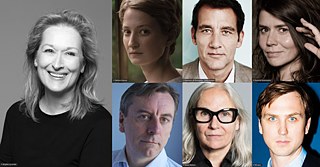Disappointingly few female directors

Only two of the 21 competition entries of the Berlinale are from female directors. This stands in contrast to the political ambition of the festival.
The 66th Berlinale 2016 started with disappointingly few competition entries from female directors – only two of the 21 submissions. The jury consists of four women and three men. As we have all been well aware since the 2015 Oscars at the latest, Meryl Streep – who heads the panel of judges – is a committed feminist. Meryl Streep appears optimistic: “I am very committed to equality and inclusion of people of all genders, races, ethnicities, religions. There should be inclusion, and this jury is evidence that at least women are included and impact dominates this jury. So I think that the Berlinale is ahead of the game.”Exklusion Of Women Not An IssueI am unable to share her conclusion that the festival is ahead of the game in terms of gender parity, however. At the opening press conference, Dieter Kosslick stressed the following point: “In my opinion it is not only cinema but culture in general that have a responsibility in our society.” This promising statement was followed by references to politically mismanaged countries.
As was the case in the debate about the events that took place at Cologne’s main train station on New Year’s Eve 2015, no further mention was made of gender discrimination at the local level, culture and policy in far-off countries being criticized instead. The exclusion of women from the film and culture industry: simply not an issue. That one of Europe’s major film festivals is screening less than two percent female contributions in the most influential section does not appear to be important enough for this self-declared “political festival”. That said, compared to the film festival in Cannes, France’s largest film festival, the Berlinale is in fact very progressive given that Cannes showed 22 films by 22 men in last year’s competition.Of 62.5 million euros in film funding, six million went to female directorsA spontaneous protest reaction such as that which changed France’s leading comic industry event – the Angoulême festival – appears unthinkable at the present time in the film industry. At least ten of the 30 illustrators refused their nominations in 2015 in favour of entries by female illustrators. The film sector’s political responsibility seems to be more concerned with preserving particular role models and power distribution criteria, one of the latter being money.
Of the 62.5 million euros in funding which the German Federal Film Fund made available for cinema films in 2013, just short of six million went to female directors and somewhat more than 56.5 million to male directors.
Yet women push themselves to their limits and thus succeed in realizing their visions even on smaller budgets. This is reflected at the Berlinale, where women account for a total of 24 percent of the entries. Women directed 112 of the 434 submissions in total. I am now keen to find out how many women I will find in front of the camera in my list of films, and will start this afternoon with Maher Abi Samra’s film Makhdoumin, a Norwegian-Lebanese co-production with United Arab Emirate participation.